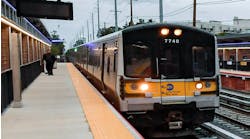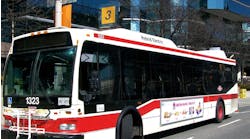New Flyer Industries Canada ULC has announced that Grand River Transit has awarded New Flyer with a contract for 39 Xcelsior clean diesel forty-foot, heavy-duty transit buses, and nine Xcelsior clean diesel forty-foot, bus rapid transit (BR) style heavy-duty transit buses. The order, which incorporated nine new BRT-style buses, converted 39 buses from the option backlog to the firm order backlog.
The purchase, supporting scheduled vehicle replacement, also supports the construction and expansion of GRT’s rapid transit network consisting of ION (which means “going” in Greek) light rail and ION bus rapid transit. Public Transit Infrastructure Funds (PTIF) was used to support the purchase. The 39 buses have been delivered to GRT, with the remaining 9 BRT buses scheduled for delivery in 2018.
“We are proud to support fleet rejuvenation for Grand River Transit, as well as the introduction of BRT buses to its ION transportation network,” said Paul Soubry, president and chief executive officer of NFI Group. “GRT has exemplified leadership in helping to grow the Canadian public transportation footprint, and we commend them on an innovative, multi-modal expansion in the southern Ontario region.”
Formed in 2000, Grand River Transit provides transit service in Kitchener, Waterloo, Cambridge, Elmira, St. Jacobs and New Hamburg, operating conventional buses, an express bus network, busPLUS service for community routes, and door-to-door transit service for riders with disabilities using specialized vehicles. It operates 70 routes covering more than 16 million kilometres and supporting a ridership of nearly 20 million each year.
The NFI Group has over 85 years of experience manufacturing buses in Canada, and is focused on advancing vehicle innovation through development of Canadian-based intellectual property and removal of barriers to adopting zero-emission vehicles and autonomous driving technologies.



